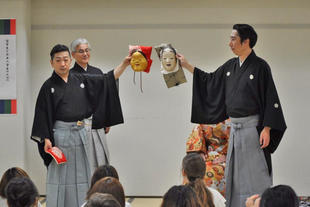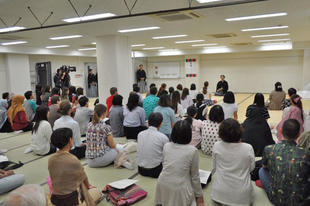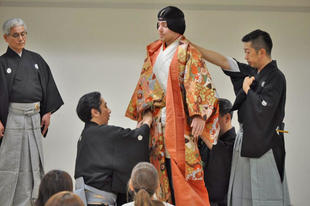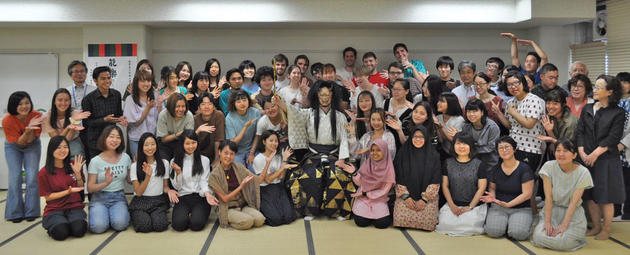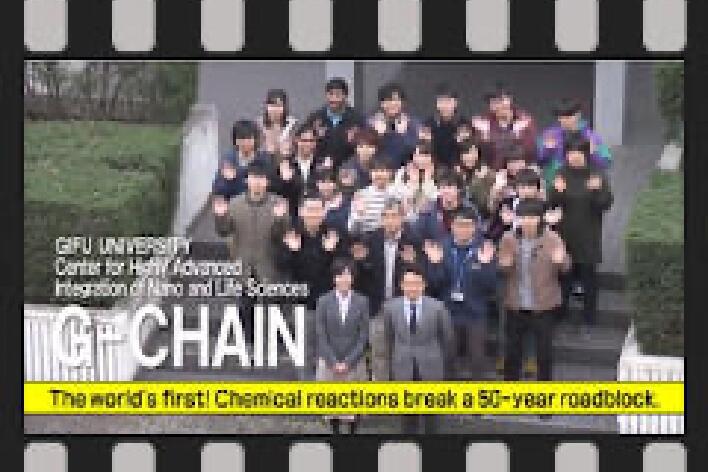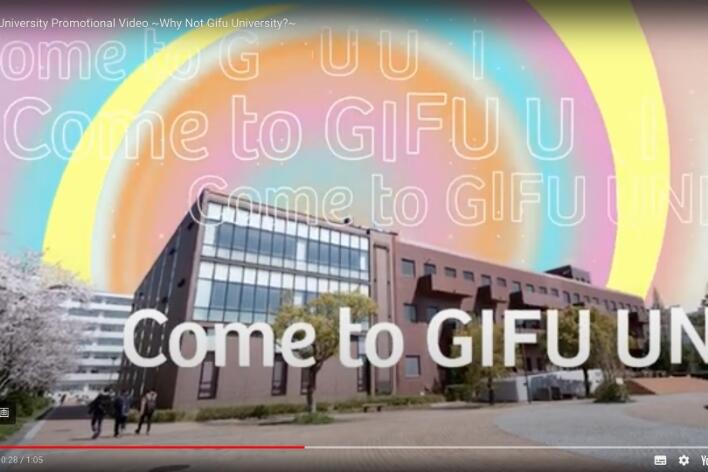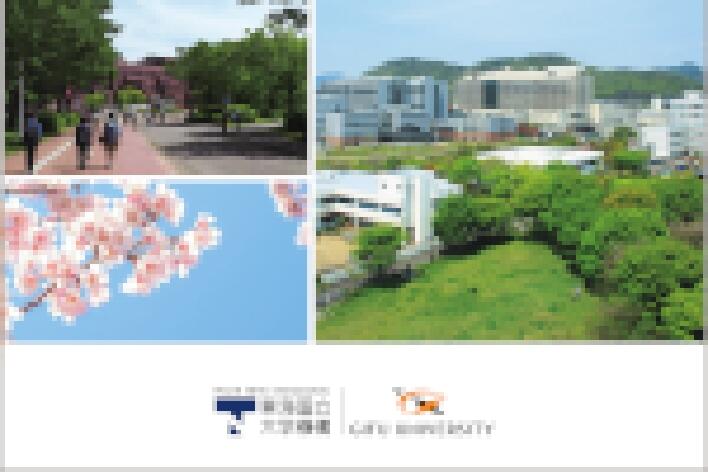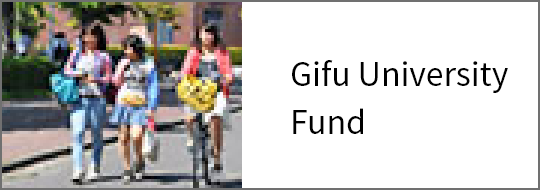Nohgaku Workshop for International and Japanese Students
The Center for Japanese Language and Culture, Gifu University Organization for Promotion of Glocalization (GU-GLOCAL) hosted the "Nohgaku Workshop for International and Japanese Students" at the center's Japanese-style tatami-mat room on July 10, 2019. This workshop started from the two different lectures: "Lecture on Noh" began in 2005 as part of the summer school program (inbound), and "Lecture on Kyogen" began in 2007. From 2014 onward, Noh and Kyogen lectures have been held the same day so that participants can get a general idea on "Nohgaku" genre. The workshop has been hugely popular among international students thanks to the invited lecturers' passionate and intriguing talks to students. The workshop is now open to anybody including university staff, citizens etc. to share the joy of knowing Nohgaku more. Approximately 80 people attended (summer school students, international and Japanese students, and teaching and administrative staff, and citizens) on July 10.
The center's newly refurbished Japanese-style tatami-mat room (over 80 tatami mats covering the floor) was used for the first time for the workshop on July 10. Because of its special properties, the room is now considered to be one of the places attracting the largest attention within campus. Prior to the opening of the workshop, President Hisataka Moriwaki met with Mr. Madoka Mikata and Mr. Hiromichi Tamoi, who perform Noh drama as main actors called "shite" in Kanze School, and Mr. Kodo Yamaguchi and Mr. Chuzaburo Shigeyama, both of whom are Kyogen drama performers in Okura School. They were invited to the workshop as instructors.
All the lecturers are very creative to help students feel the profundity of Nohgaku. On July 10, the workshop started with the Noh session in the first half, and the Kyogen session in the second half. It ended with dressing a student model up in traditional kimono for Nohgaku.
Here are some of the details of the workshop: first, the instructors played one of the representative Noh dramas called, "Shakkyo." The students got down on their knees and closely watched the eight-minute performance without a word. After the lectures on the history and performances of Nohgaku, the instructors and the students chanted "Takasago" together. The students also practiced the special Noh footsteps called "Komawari." They worked very hard not to fall to the ground when they were imitating complicated moves of the instructors.
In comic Kyogen performances, laughter is a key component as opposed to more serious Noh. The students were taught how to laugh at the top of their lungs, and their huge laughter were reverberating throughout the entire room for some time. In Kyogen, onomatopoeia is also used during performances. The instructors gave some questions to the students about animal calls/cries used in Kyogen, but they had hard time finding the right answers. This Q&A session was followed by "Neongyoku" performance by the instructors. Although students did not understand everything, they enjoyed every moment together, and were united by the power of art in the workshop.
To wrap up the session, the instructors helped a summer school student (male) put on two types of traditional Noh kimono. One was a formal gorgeous kimono, the other represented a menacing demon. When the student appeared on stage wearing the kimonos and a special wig, he looked very good in kimono and everyone wasted no time taking pictures.
The Nohgaku Workshop offers a rare opportunity for people to watch traditional Japanese culture under the instructions of professional performers. It has already become a regular event indispensable to Gifu University.
The GU-GLOCAL and the Center for Japanese Language and Culture will continue to host a number of Japanese culture and tradition study programs to disseminate their attractions to people both on and off campus.
